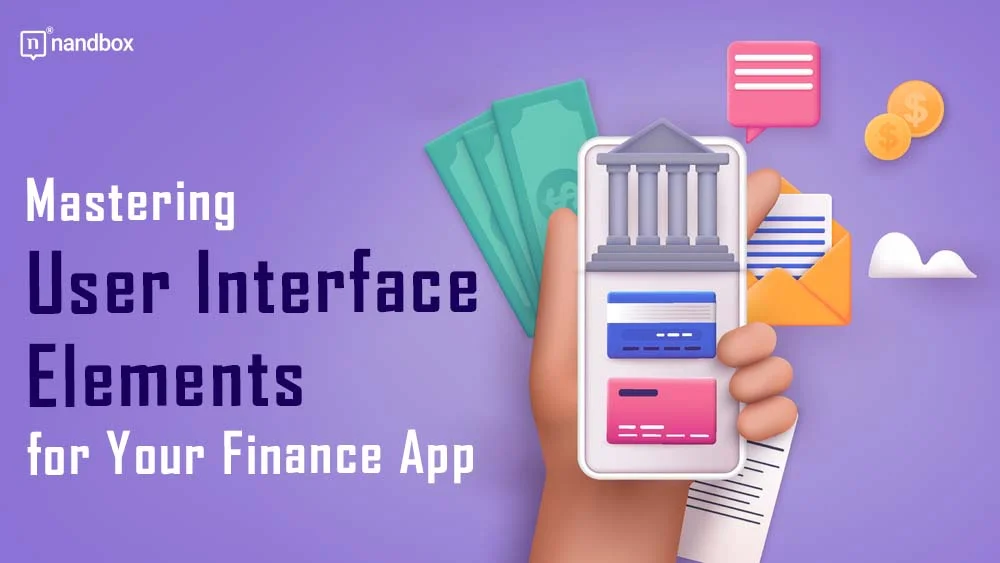6 UI Elements That Will Make Your Personal Finance App Stand Out
A personal finance app is indispensable in today’s fast-paced digital world. Unsurprisingly, global users downloaded 2,656,2 million finance apps in 2022. These apps come with features that allow users to manage their money and make more informed financial decisions. By 2029, the market size of digital personal finance apps is expected to reach several million USD. This wide-ranging audience can be advantageous for financial businesses. However, setting your app apart is paramount as more financial apps flood the market. Whether you’re building an app for budgeting, expense tracking, investment, student loan refinance, or debt management, providing a meaningful and relevant user experience is essential. Below are user interface (UI) elements to help make your personal finance app stand out.
The Importance of User Interface Design in Personal Finance Apps
Managing money is often a tedious and intimidating task for many people. When building an app, it’s important to make financial management a more engaging experience. A well-executed user interface (UI) design will help lessen customer’s cognitive load and facilitate smooth mobile financial activities.
The UI design is the display you see when you use the personal finances app. It includes the visual elements, navigation, functionality, and processes that serve as access points where users may interact to use a digital product or service.
Its primary objective is to enhance users’ experiences and increase their engagement with the app. Specifically, personal finance apps must have a well-designed UI for the following reasons:
- Provide valuable, understandable, and personalized insights into the user’s financial data
- Meet the user’s needs in fulfilling their financial goals and boost app engagement at the same time
- Guide users on what to do next by providing information in actionable formats
- Make it easier for users to understand and execute financial transactions
- Enable users to access financial details effortlessly
- Prevent users from feeling frustrated while using the app
- Reduce the number of steps necessary to perform a task
In essence, innovative UI design aims to meet users’ ever-changing needs and expectations. As the UI design gives them exciting content and easy navigation, they will likely engage with the app and recommend it to others.
When more users develop an interest in your personal finance app, you will generate more natural traffic. This will boost conversion rates and the value of your brand. Hence, paying attention to the app’s UI design can benefit you and your users.
How To Make Your Personal Finance App Stand Out With These 6 User Interface Elements?
UI design is crucial to adding interactivity to your app and creating touchpoints for users navigating the system. It involves user interface elements that promote consistency across the app, ensuring they are uniform for users to explore and use applications with minimal effort.
Likewise, it’s vital to differentiate the app to attract and retain users in a crowded marketplace. Make your personal finance app stand out by incorporating the following elements in the user interface:
1. Soft prompts
Directing users toward taking specific actions is an integral part of providing them with an optimal app experience. Soft prompts are a great way to help the user comprehend aspects of the app that might be unclear. Such prompts must be user-friendly and address their difficulties, enhancing overall usability.
2. Easy language
The words, phrases, and concepts in the personal finance app must be familiar to the target audience or users. They should be able to understand instructions without needing to look up a word’s definition.
When considering UI design, ensure the app’s language is easy to comprehend. Suppose there are complex terms. Explain them in simple words or provide users with helpful tips. This way, using your app becomes convenient and enjoyable.
3. Single-click signup forms
Log-in or signup forms are critical elements of any app. Make sure they are easy to understand. Using complex fields can frustrate app users. Consider creating a single-click signup form to save users time and enable them to get started with the app. Limit the forms to the essentials so they won’t avoid the signup process.
4. Goal-setting options
Today’s culture is heavily focused on setting and achieving goals. Incorporating goal-setting options is an excellent way to set your personal finance app apart. Add goals and tasks to enhance user engagement in your app.
Whether it’s for establishing an emergency fund or saving for their dream vacation, adding this feature to the design will help users confidently reach their financial goals.
5. Interactive animations
Incorporating interactive or animated elements is also essential for enhancing the user experience in personal finance apps. They can contribute to a more enjoyable and efficient interaction with the app, making it more appealing and giving users a reason to use it again.
But the animations must not make financial matters look insignificant. They should encourage users to remain mindful of how they manage their money and the potential consequences of their financial decisions. Here are some animations you can include in the personal finance app:
- A button press effect or color change to confirm the user’s action on the app
- A spinning icon that indicates the app is working while the user is waiting for data to load
- Subtle notification sounds or vibrations that serve as confirmation for successful transactions
6. User’s review and feedback
Incorporating users’ reviews and feedback into the UI design is also vital. It will give you an accurate idea of what app elements work well and need improvement.
Users can shine a light on issues developers didn’t observe before. For instance, they can help you discover if there are unresponsive buttons, cluttered screens, or dead links.
Simplify Financial Management for Personal Finances App Users
Money management is an essential matter that can affect an individual’s future and quality of life, yet most people hesitate to monitor their expenses and budgets. That’s where the importance of building intuitive personal finance apps comes into play.
The increasing demand for such apps holds significant opportunities for companies and independent developers. Developing a personal finance app requires careful consideration, as with any other venture. The key is to create an interface that simplifies financial management for app users.





